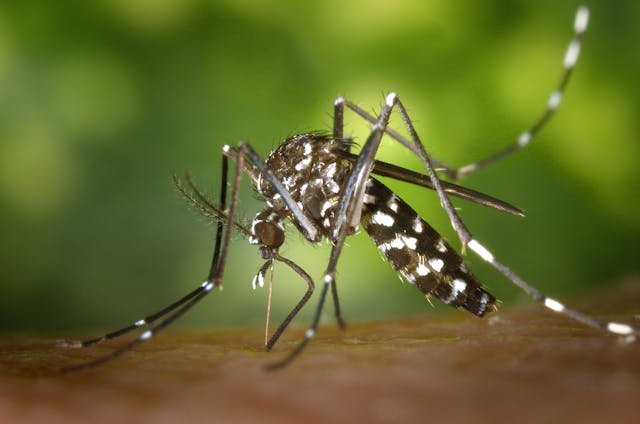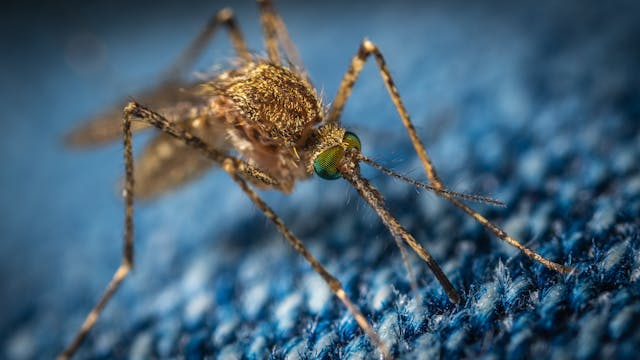If there’s one thing the COVID-19 pandemic taught us, it’s how quickly diseases can spread and disrupt daily life. In 2025, the world faces multiple infectious threats—some new, some resurfacing, and some evolving into more dangerous forms. Experts warn that these 11 deadly diseases could pose significant health risks in the coming year.

From drug-resistant bacteria to fast-spreading mosquito-borne viruses, here’s what you need to know about the most concerning diseases that could impact global health in 2025.
1. Bird Flu – A Growing Pandemic Threat

Bird flu, or avian influenza, is no longer just a concern for birds. Scientists have discovered asymptomatic infections in other animals, including horses, raising fears of silent transmission.
The first human death linked to bird flu in the U.S. was reported in Louisiana, following exposure to infected poultry. While human-to-human transmission remains rare, experts warn that the virus’s potential to mutate could lead to a global outbreak.
2. Antimicrobial-Resistant Bacteria – The Silent Killer

Antimicrobial resistance (AMR) is an invisible but deadly crisis. Each year, drug-resistant infections claim 1.27 million lives, as bacteria become immune to antibiotics.
Organizations like the WHO and CDC are pushing for responsible antibiotic use, with goals to reduce AMR deaths by 10% by 2030 and develop five new treatments by 2025. Without urgent action, common infections could once again become untreatable.
3. Cholera – A Global Health Crisis

Cholera remains a major threat, particularly in regions with poor sanitation. In 2024 alone, 371,517 cases were reported across 28 countries, resulting in over 2,500 deaths.
Outbreaks are fueled by displacement, climate change, and natural disasters, worsening the situation. Despite increased vaccine production, supply shortages persist. The Global Task Force on Cholera Control (GTFCC) aims to reduce deaths by 90% by 2030, but progress is slow.
4. Chikungunya – The Mosquito-Borne Menace

Chikungunya is a painful viral disease spread by Aedes mosquitoes. It causes crippling joint pain and fever, with symptoms sometimes lasting months or even years.
In 2024, over 480,000 cases and 200 deaths were recorded worldwide. Fortunately, a new vaccine was recently approved in the U.S., and clinical trials are ongoing in East Africa. But with no cure and the risk of long-term complications like arthritis, prevention remains crucial.
5. COVID-19 – Still a Threat in 2025

Despite widespread vaccinations, COVID-19 isn’t going away. The latest Omicron subvariant, XEC, is highly contagious and continues to cause hospitalizations.
Vaccines remain the best defense, and health officials recommend annual boosters for everyone over six months old. COVID-19 vaccines are now included in routine immunization schedules, reinforcing the importance of continued protection.
6. Dengue Fever – The Rising Epidemic

Dengue fever cases have surged globally, with over 7.6 million infections and 3,000 deaths confirmed by April 2024. The Americas have been hit especially hard.
A newly approved TAK-003 dengue vaccine is now available for children in high-risk areas. However, controlling the outbreak requires better tracking, mosquito control, and public awareness to slow its spread.
7. Measles – Making a Dangerous Comeback

Once nearly eliminated, measles is roaring back due to declining vaccination rates. Global cases rose by 20% between 2022 and 2023, reaching levels not seen since 2008.
In Europe, cases increased 45-fold, prompting the UK to declare a national incident. Health officials stress the urgency of boosting vaccination coverage, but rising anti-vaccine sentiment continues to hinder progress.
8. Disease X – The Next Pandemic?

Disease X isn’t an actual disease—it’s a placeholder term used by the World Health Organization (WHO) to prepare for unknown future threats.
The concept gained attention after COVID-19, proving the importance of studying entire viral families instead of just specific diseases. In late 2024, a mysterious outbreak in Congo, initially labeled Disease X, killed 79 people before being identified as a deadly new malaria strain.
9. Scabies – A Contagious Skin Epidemic

Scabies, a highly contagious skin condition, has tripled in the UK, with outbreaks particularly severe in northern England.
Caused by mites that burrow under the skin, scabies results in intense itching and rashes. Treatment includes topical creams and oral ivermectin, but early detection is key. Health experts emphasize the importance of treating close contacts, even if they don’t show symptoms, to prevent reinfection.
10. West Nile Fever – A Growing Concern in Europe

West Nile Fever, spread by mosquitoes, has seen a sharp increase in Europe. In 2024, 1,436 cases were reported—nearly double the 2023 total.
Greece, Italy, Spain, and Hungary have been the worst affected. Though most infections are mild, severe cases can lead to brain inflammation (encephalitis), paralysis, or even death. Public health experts stress the need for mosquito control programs and increased awareness to curb infections.
11. Whooping Cough – Resurfacing with a Vengeance

Whooping cough, or pertussis, is making an alarming comeback. Australia reported record-breaking cases in 2024, with infants under six months old most at risk.
The surge is linked to declining booster shot rates. To combat this, health officials recommend Tdap vaccinations for pregnant women and caregivers, ensuring newborns are protected from the disease.
Conclusion: Why Staying Informed Matters
The rise of these 11 deadly diseases serves as a wake-up call for global health preparedness. Some are resurfacing due to declining vaccination rates, while others, like antimicrobial-resistant bacteria, are evolving into unstoppable threats.
Staying informed, following public health guidelines, and supporting scientific research are crucial steps in preventing future pandemics. While new vaccines and treatments offer hope, individual responsibility—through hygiene, vaccination, and awareness—remains key to fighting these emerging threats in 2025.